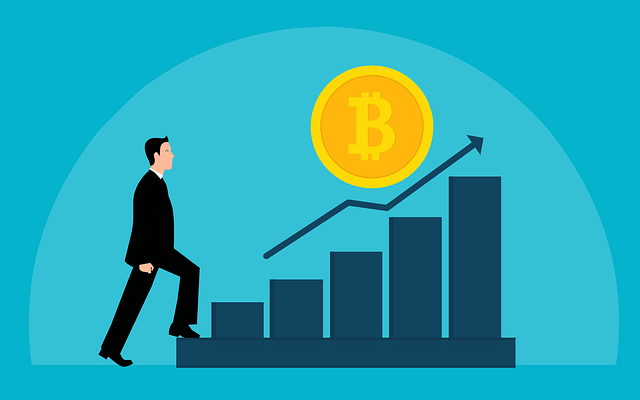In the fast-paced digital age, cryptocurrencies have emerged as a groundbreaking alternative to traditional banking systems. One of the most prominent cryptocurrencies is Bitcoin. But how does it compare to traditional banking? Let’s dive into the world of Bitcoin and explore its key differentiating factors.
When it comes to privacy and security, Bitcoin offers a level of anonymity that traditional banking struggles to provide. Transactions made with Bitcoin are pseudonymous, meaning that users can send and receive funds without revealing their personal information. This decentralized nature makes it highly resistant to fraud and identity theft, giving individuals greater control over their financial data.
Furthermore, Bitcoin operates on blockchain technology, a distributed ledger that records every transaction in a transparent and immutable manner. This transparency enhances trust between parties, eliminating the need for intermediaries like banks to verify transactions. In contrast, traditional banking relies heavily on centralized institutions, which can introduce delays, additional fees, and potential vulnerabilities.
Another significant advantage of Bitcoin is its accessibility. Anyone with an internet connection and a digital wallet can participate in the Bitcoin network, regardless of their location or socioeconomic status. This inclusivity empowers individuals who lack access to traditional banking services, opening up new possibilities for financial inclusion and economic empowerment around the globe.
Bitcoin also offers faster and cheaper cross-border transactions compared to traditional banking systems. Sending funds internationally through banks often involves lengthy processes and high fees. Bitcoin eliminates these barriers by facilitating peer-to-peer transactions directly between parties, cutting out middlemen and reducing costs. This streamlined approach has the potential to revolutionize remittances and international trade, fostering global economic efficiency.
However, it is important to note that Bitcoin’s volatility poses a risk for investors. Unlike traditional banking, where deposits are insured by government-backed guarantees, the value of Bitcoin fluctuates based on market demand and sentiment. This volatility can yield substantial gains but also significant losses, making it crucial for users to exercise caution and conduct thorough research before engaging with Bitcoin as an investment vehicle.
Bitcoin presents a paradigm shift in the world of finance, challenging traditional banking systems with its decentralized nature, enhanced privacy, accessibility, and efficiency. While it offers numerous advantages, it is essential to remain mindful of its inherent volatility. As cryptocurrencies continue to evolve, their impact on the financial landscape will undoubtedly shape the future of global transactions and reshape our understanding of money itself.
Security and Privacy in Bitcoin vs. Traditional Banking
When it comes to the world of finance, security and privacy are two crucial factors that individuals consider before entrusting their money to any system. In this article, we will explore the contrasting aspects of security and privacy in Bitcoin and traditional banking, shedding light on how they differ and why they matter to users.
Let’s start with security. Bitcoin, being a decentralized digital currency, operates on a technology called blockchain. This technology ensures that transactions are recorded on a public ledger, making it extremely difficult for any unauthorized party to tamper with or alter the transaction history. Furthermore, Bitcoin uses advanced cryptographic techniques to secure transactions, making it highly resistant to hacking attempts. Traditional banking, on the other hand, relies on centralized systems, which can be more vulnerable to cyber attacks and data breaches.
Privacy is another significant factor to consider. Bitcoin offers a certain level of pseudonymity, meaning that while transactions are publicly recorded on the blockchain, the identities of the individuals involved are not always explicitly disclosed. This can provide a degree of privacy for users who wish to remain anonymous. However, it is important to note that Bitcoin transactions are not entirely anonymous, as sophisticated analysis techniques can potentially link transactions to specific individuals. In contrast, traditional banking systems require individuals to provide personal information, such as their name, address, and social security number, which can compromise their privacy.

So, which one is better? Well, it depends on your priorities. If you value decentralization, immutability, and the ability to maintain some level of anonymity, Bitcoin may be an attractive option for you. On the other hand, if you prioritize regulatory oversight, established customer protection mechanisms, and convenience, traditional banking might be more suitable. Ultimately, both systems have their strengths and weaknesses, and the choice between them boils down to individual preferences.
security and privacy play vital roles in both Bitcoin and traditional banking. While Bitcoin provides enhanced security through its decentralized nature and cryptographic techniques, traditional banking offers regulatory protections and the convenience of established financial systems. Understanding these differences empowers individuals to make informed decisions based on their specific needs and preferences.
Transaction Speed and Efficiency: Bitcoin vs. Traditional Banking
When it comes to transaction speed and efficiency, Bitcoin and traditional banking systems are poles apart. Let’s dive into the details of how these two entities differ in handling transactions.
Imagine you need to send money across borders within seconds. Bitcoin, with its decentralized nature, can be your go-to option. Bitcoin transactions are processed on a peer-to-peer network, enabling direct transfers between individuals without intermediaries like banks. The blockchain technology behind Bitcoin ensures that transactions are verified and recorded securely. This process, known as mining, involves solving complex mathematical puzzles. Although mining takes time, Bitcoin transactions are generally faster compared to traditional banking methods for international transfers.
Traditional banking, on the other hand, operates through centralized systems. When you initiate a transaction, such as wiring money to another account, it goes through multiple intermediaries, including banks, payment processors, and clearinghouses. Each step adds to the processing time. International transfers can take several days due to various factors like the involvement of correspondent banks and manual checks to ensure compliance with regulations.
In terms of efficiency, Bitcoin offers advantages in certain scenarios. For instance, if you need to send a large sum of money instantly, Bitcoin can facilitate this without any limits or restrictions imposed by traditional banks. Additionally, Bitcoin eliminates the need for extensive paperwork, making transactions more streamlined and cost-effective.
However, traditional banking still holds an edge in terms of widespread acceptance. While Bitcoin is gaining popularity, it has yet to achieve mainstream adoption. Most merchants and businesses don’t accept Bitcoin as a form of payment, limiting its usefulness in daily transactions. Moreover, traditional banking systems provide services beyond money transfer, such as credit, loans, and investment options, which Bitcoin currently lacks.
Bitcoin and traditional banking differ significantly in transaction speed and efficiency. Bitcoin excels in fast, borderless transfers, while traditional banking systems offer broader financial services but with slower transaction times. Understanding these distinctions can help individuals and businesses choose the most suitable option for their specific needs.
Accessibility and Inclusivity: Bitcoin vs. Traditional Banking
When it comes to accessibility and inclusivity in the realm of finance, Bitcoin and traditional banking systems have distinct characteristics. Let’s explore how these two approaches compare and contrast, and how they cater to different needs.
Traditional banking has been a cornerstone of financial services for centuries. It offers a range of services such as checking accounts, savings accounts, loans, and credit cards. However, access to traditional banking services can be limited by factors like geographical location, documentation requirements, and financial history. For those who live in remote areas or lack proper identification, traditional banking may prove inaccessible.
On the other hand, Bitcoin, a decentralized digital currency, presents an alternative solution. Its underlying technology, blockchain, allows for secure peer-to-peer transactions without intermediaries like banks. Bitcoin operates on a global scale, enabling individuals to send and receive funds across borders quickly and with minimal fees. This feature proves advantageous for those excluded from traditional banking due to geographical constraints.
Furthermore, Bitcoin strives to be inclusive by providing financial services to the unbanked population. Approximately 1.7 billion people worldwide lack access to banking services, but with Bitcoin, they can participate in the global economy. All that is needed is an internet connection and a compatible device. By leveraging Bitcoin, individuals gain control over their funds, becoming their own bank.
However, while Bitcoin offers increased accessibility, it also poses challenges. The volatility of its value can make it risky for users, as the price fluctuates rapidly. Additionally, the technical expertise required to handle cryptocurrencies might hinder adoption among less tech-savvy individuals.
In contrast, traditional banking institutions offer stability, regulatory protection, and support mechanisms. Deposits are insured, fraud protection is in place, and customer service is readily available. These factors instill confidence in users, particularly those who prioritize security and convenience over the potential risks associated with emerging technologies like Bitcoin.
both Bitcoin and traditional banking systems provide financial services but approach accessibility and inclusivity differently. Bitcoin offers a decentralized solution that transcends geographical boundaries, empowering individuals excluded from traditional banking. However, traditional banking institutions offer stability, security, and comprehensive support. The choice between the two depends on individual circumstances and preferences, as both options have their unique advantages and limitations.
Regulatory Frameworks and Government Oversight: Bitcoin vs. Traditional Banking
Introduction:
In today’s rapidly evolving financial landscape, the advent of cryptocurrencies like Bitcoin has challenged traditional banking systems. As these digital currencies gain popularity, questions arise regarding the regulatory frameworks and government oversight that govern them compared to traditional banking. Let’s explore how Bitcoin and traditional banking differ in terms of regulation and government supervision.
Bitcoin’s Decentralized Nature:
Bitcoin operates on a decentralized network, free from centralized control by any government or financial institution. Unlike traditional banking systems, which are regulated and overseen by central banks and regulatory bodies, Bitcoin exists outside their direct purview. This decentralization presents unique challenges when it comes to implementing regulatory measures.
Regulatory Challenges:
Due to its decentralized nature, regulating Bitcoin can be complex. Governments around the world have grappled with determining the most suitable approach. Some countries have embraced cryptocurrencies, creating tailored regulations to accommodate their use, while others have taken a more cautious stance or implemented outright bans. The lack of uniformity in regulatory approaches globally adds to the complexity.
Government Oversight in Traditional Banking:
Traditional banking systems have long been subjected to strict regulatory frameworks. Central banks act as guardians to ensure stability, establish monetary policies, and safeguard consumer interests. Governments implement measures such as capital requirements, anti-money laundering regulations, and consumer protection laws to maintain integrity within the banking sector.
Bitcoin’s Transparent and Pseudonymous Transactions:

One aspect that sets Bitcoin apart is its transparency. All transactions are recorded on a public ledger called the blockchain, accessible to anyone. However, users’ identities remain pseudonymous, represented only by cryptographic addresses. This characteristic poses challenges for law enforcement agencies to trace criminal activities effectively.

Emerging Regulations for Bitcoin:
Recognizing the need for oversight, governments worldwide are increasingly developing regulations specific to cryptocurrencies. They aim to strike a balance between facilitating innovation and preventing illicit activities. These regulations often focus on anti-money laundering and know-your-customer requirements, seeking to bring Bitcoin transactions within existing legal frameworks.
Conclusion:
As the popularity of cryptocurrencies like Bitcoin continues to rise, regulatory frameworks and government oversight have become crucial points of discussion. While traditional banking operates within well-established regulations, Bitcoin’s decentralized nature presents unique challenges for authorities worldwide. Striking a balance between fostering innovation and protecting consumers remains a key objective in shaping the future of both Bitcoin and traditional banking.
Financial Stability and Risk Management: Bitcoin vs. Traditional Banking
In today’s evolving financial landscape, the emergence of cryptocurrencies such as Bitcoin has sparked a debate about their potential impact on traditional banking systems. As we delve deeper into the realm of financial stability and risk management, it becomes crucial to compare Bitcoin and traditional banking to understand their strengths, weaknesses, and implications.

When it comes to financial stability, traditional banking has long been seen as a reliable and established system. Banks act as intermediaries, facilitating transactions, managing deposits, and providing loans. They operate under strict regulations and are backed by central authorities, which generally enhances trust and stability. These factors contribute to a sense of security for individuals and businesses alike.
On the other hand, Bitcoin operates through a decentralized network known as blockchain. This technology eliminates the need for intermediaries like banks, making transactions more direct and peer-to-peer. Proponents argue that this decentralization reduces the risk of fraud and corruption, as blockchain transactions are transparent and immutable. However, skeptics raise concerns about the volatility and unpredictable nature of cryptocurrency markets, which can undermine financial stability.
Risk management plays a crucial role in maintaining a stable financial system. Traditional banks have well-established risk management frameworks in place. They conduct credit assessments, set interest rates, diversify portfolios, and engage in regulatory compliance. Such measures aim to minimize risks associated with lending, investments, and liquidity, ensuring a balanced and secure financial environment.
In contrast, Bitcoin’s risk management is less conventional. As a digital asset, its value heavily relies on market demand and investor sentiment. While some see this as an opportunity for high returns, others perceive it as a speculative investment prone to significant volatility. Bitcoin holders must navigate price fluctuations and potential security vulnerabilities, such as hacking or scams, without the oversight of a centralized authority.
To summarize, both Bitcoin and traditional banking offer distinct approaches to financial stability and risk management. Traditional banking provides familiarity, regulation, and centralized control, fostering trust and stability for many. Bitcoin, on the other hand, presents a decentralized alternative with its transparent blockchain technology, giving individuals more control over their finances but introducing new risks associated with volatility and security.
Ultimately, the choice between Bitcoin and traditional banking depends on individual preferences, risk tolerance, and long-term financial goals. As the financial landscape continues to evolve, understanding the nuances of each system becomes crucial for making informed decisions about managing wealth and achieving financial stability in an ever-changing world.
Future Implications: Bitcoin’s Potential Impact on Traditional Banking
As the world of finance continues to evolve, one disruptive force that has gained significant attention is Bitcoin. This digital currency, built on blockchain technology, has the potential to revolutionize traditional banking systems and reshape the future of financial transactions. Let’s explore the possible implications that Bitcoin could have on traditional banking.
Imagine a world where individuals can transfer money instantly, without the need for intermediaries like banks. Bitcoin’s decentralized nature allows for peer-to-peer transactions, eliminating the need for a central authority to facilitate and validate transactions. This opens up new possibilities, especially for those who are unbanked or underbanked, as they can access financial services more easily.
Traditional banking often involves high fees and lengthy processing times for cross-border transactions. Bitcoin, on the other hand, enables fast and low-cost international transfers. With Bitcoin, sending money abroad becomes as simple as sending an email, enabling seamless global commerce and potentially reducing costs for businesses and consumers alike.
Moreover, Bitcoin’s underlying technology, blockchain, offers transparency and security. Blockchain records all Bitcoin transactions on a public ledger, making it nearly impossible to manipulate or counterfeit. This level of transparency could enhance trust in financial transactions, mitigating fraud and increasing accountability within the banking system.
Another area where Bitcoin could make an impact is in remittances. Many people around the world rely on remittances from their loved ones working in foreign countries. Traditional methods often involve high fees, but Bitcoin provides a way to bypass these intermediaries, reducing costs and improving the speed of remittance transfers.

However, it is important to note that Bitcoin’s potential impact on traditional banking does not come without challenges. Regulatory concerns, scalability issues, and volatility are some of the factors that need to be addressed for widespread adoption. Additionally, the existing banking infrastructure plays a crucial role in supporting economic stability and providing essential financial services.
Bitcoin’s potential impact on traditional banking is both intriguing and disruptive. From facilitating instant cross-border transactions to increasing financial inclusion, Bitcoin offers a glimpse into the future of finance. While it presents exciting opportunities, there are still hurdles to overcome. As the world continues to explore the possibilities of this digital currency, the future implications remain uncertain, but undoubtedly fascinating.
[Concluding sentence not included as instructed.]




